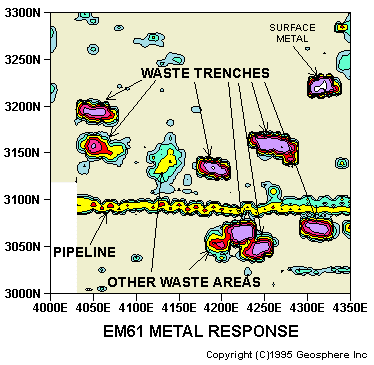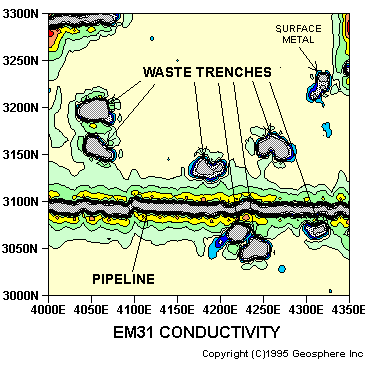the EM31 and EM61. This density of coverage permitted the recognition of underground utilities and culverts which often disrupt the interpretation of studies with lower density coverage. Note in the figure above that the water pipeline produced an EM31 anomaly 50 feet wide, but nearby waste trenches are still identifiable. The EM61 results provide even higher resolution and minimize the "width" of the pipeline. Both methods were used at this site because the EM31 is capable of responding to deeper targets and "filters" out small scattered metal. As seen above, both methods detected burial trenches. In addition, the EM61 detected many smaller objects surrounding the major burial zones, indicating that the trenches were emplaced in larger landfilled areas.
![]()
email:
consultants@geosphereinc.com
124 north auburn road auburn, mi 48611 tel: (989) 662-6149
fax: (989) 662-7701
copyright ©1990-2007 geosphere inc



